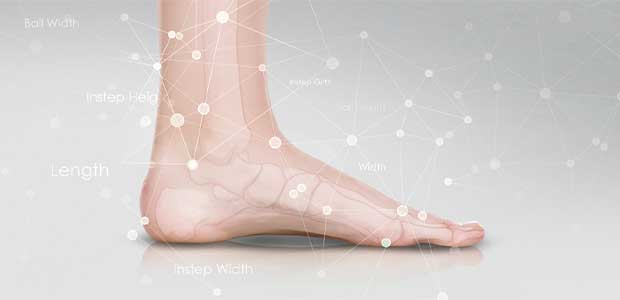
Finding the Right Fit: When the Work Shoe Fits
Research shows that ill-fitting work shoes can significantly harm employees.
- By Janelle Kinnaird
- Aug 25, 2022
Search the web and you’ll find all kinds of articles on how a work boot should fit and why it is important to both your employees and your company. While all of it has some truth, everybody gives you the same answer, “The best way to know is to try it on.” This advice, however, is wrong.
Tried and Failed
Accurate shoe fitting has been around for decades. In the 1920s through the 1970s, a Pedoscope or Fluoroscope was installed at retail shoe stores. It was basically an x-ray shoe fitter that showed how the bones of your foot fit into the outline of the shoe—how little or too much you could wiggle your toes.
Concerns arose of the radiation exposure even though the shoe industry at the time denied those claims of harm and touted that the prevention of harm from poor-fitting shoes was greater. Over the years, however, regulations around exposure were implemented as well as even banning the use of the machines in specific states. In 1999, Time magazine placed the shoe store x-ray devices on a list of the 100 worst ideas of the 20th century.
Though using x-ray technology was innovative at the time, in reality, showing the bones in the shoe did nothing to prove an accurate best fit. Fit is primarily based on the soft tissue of the foot, not the bones, which the x-ray obviously did not show.
As a result, the average consumer gravitated back to knowledgeable shoe salesmen using a Brannock device to measure foot length and width to determine shoe size. And then came the trial-and-error of trying on styles in that size range from the small and limited back stockroom to determine what felt good in that moment.
We bought shoes this way for years, but now you are hard-pressed to find a brick-and-mortar store that still knows how to correctly measure feet. With big box and chain self-service stores, that bit of proper fit knowledge got lost or discarded to serve the bottom line of faster service with less investment. And now with the addition of convenient online shopping, today’s struggle is real with buying shoes. How do you know the right fit if you can’t try it on?
Why the Right Fit Matters
Cinderella could tell you the right fitting shoe resulted in finding her prince. Your employees could tell you the right fitting work boot results in no pain, more energy and productivity and less recovery from a long hard shift.
This article originally appeared in the September 1, 2022 issue of Occupational Health & Safety.